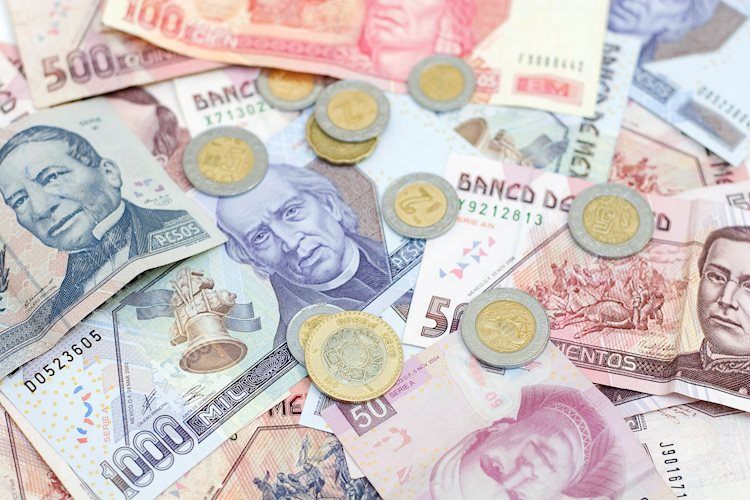
On Monday, the Mexican Peso (MXN) depreciated significantly against the US Dollar (USD) as Mexico’s markets remained shut in observance of Benito Juarez’s birth, a former President of Mexico. The upcoming week is marked by significant economic events, including monetary policy decisions from the US Federal Reserve (Fed) and the Bank of Mexico (Banxico), which are poised to drive market movements. The USD/MXN is currently trading at 16.85, showing an increase of 0.88% and nearing a new five-day high.
The economic calendar in Mexico will be relatively quiet at the beginning of the week, with attention turning to Tuesday for the release of Aggregate Demand and Private Spending data. On Thursday, investors will focus on the Retail Sales figures for January, which are anticipated to show a recovery, followed by Banxico’s policy decision. The general expectation among investors is for Mexico’s central bank to lower interest rates from 11.25% to 11% on March 21.
Across the border, US housing data is expected to influence the USD’s performance ahead of the Federal Open Market Committee (FOMC) meeting. Market participants will closely monitor any changes in the statement, the Summary of Economic Projections (SEP), and the press conference by Fed Chairman Jerome Powell.
Daily Recap of Market Trends: Mexican Peso under pressure amid dovish Banxico stance
- The movement of the USD/MXN pair is being influenced by the narrowing interest rate differentials between Mexico and the United States, potentially guiding the pair towards the 17.00 level.
- Banxico is anticipated to lower interest rates on March 21, with expectations of a potential 3-2 split vote. Recent communications from Banxico officials suggest a divided Governing Council, with some members leaning towards a dovish stance and others adopting a more hawkish view.
- A slowdown in Mexico’s economy could trigger Banxico’s first interest rate cut, as the central bank revises its growth projections downwards. The latest forecasts indicate a 2.8% year-on-year growth for 2024, down from 3%, and a steady 1.5% for 2025.
- Analysts’ projections indicate a deceleration in inflation, potentially prompting Banxico to implement its first rate reduction. Forecasts suggest interest rates reaching 9.5% and an exchange rate of 18.31 by the end of the year.
- Recent US inflation data adjustments have led to a moderation in dovish expectations. Market futures now align more closely with the Fed’s projections, anticipating the Federal Funds Rate (FFR) to reach 4.71% by year-end. The upcoming Fed meeting is scheduled for March 19-20.
Technical Analysis: Mexican Peso shows signs of weakness as USD/MXN targets 16.80
The USD/MXN pair is on the verge of shifting to a neutral bias, with buyers stepping in near yearly lows to push the exchange rate towards the 16.80 region. A breach above this level could propel the pair towards 17.00, followed by the 50-day Simple Moving Average (SMA) at 17.02, the 100-day SMA at 17.16, and the 200-day SMA at 17.21.
Conversely, if the pair remains below 16.80, it could open the path for a retest of last year’s low at 16.62, followed by the October 2015 low of 16.32 and the psychological level of 16.00.
USD/MXN Price Movement – Daily Chart

Mexican Peso Frequently Asked Questions
The Mexican Peso (MXN) holds a prominent position as the most traded currency among Latin American counterparts. Its valuation is influenced by various factors such as the performance of the Mexican economy, policies of the country’s central bank, foreign investment levels, and remittance inflows from Mexicans residing abroad, particularly in the US. Geopolitical developments, like nearshoring trends and oil prices, also impact the MXN due to Mexico’s significant role as a manufacturing hub and oil exporter.
Banxico’s primary objective is to maintain stable inflation levels around the 3% target, achieved through interest rate adjustments. When inflation rises, Banxico raises interest rates to curb demand and inflationary pressures. Higher interest rates generally strengthen the Mexican Peso by attracting investors seeking higher yields. On the other hand, the MXN tends to lose value when interest rates are low.
The Mexican peso and the state of the Mexican economy are both measured by economic indicators. A robust economy with high growth, low unemployment, and consumer confidence is favorable for MXN, attracting foreign investments and potentially leading Banxico to raise interest rates. Conversely, weak economic data can depreciate the MXN.
As an emerging-market currency, the Mexican Peso tends to perform well during periods of low market risk appetite, known as risk-on sentiment. Conversely, in times of market volatility or uncertainty, investors tend to sell riskier assets like MXN and seek refuge in safer havens.
